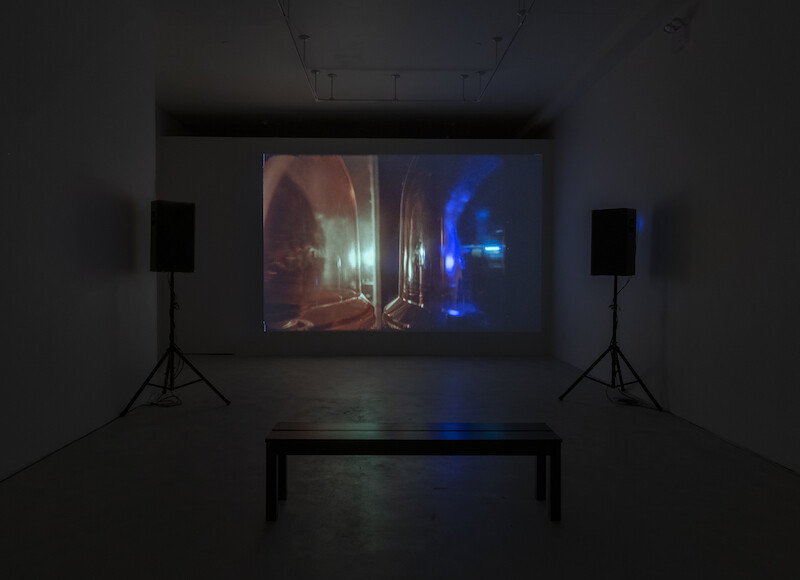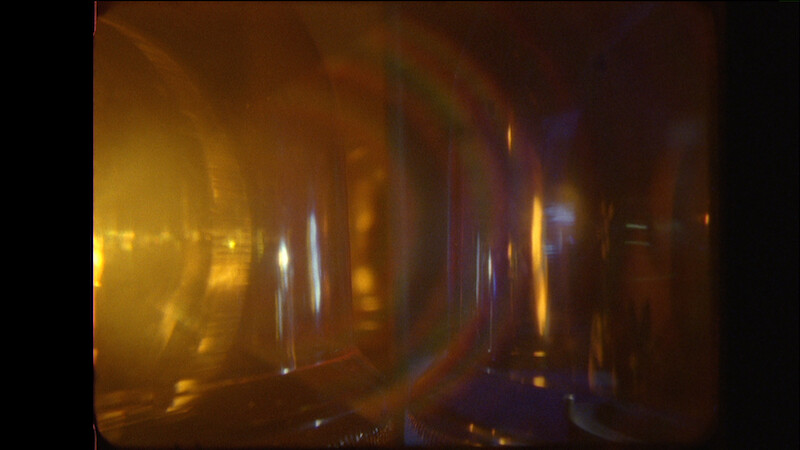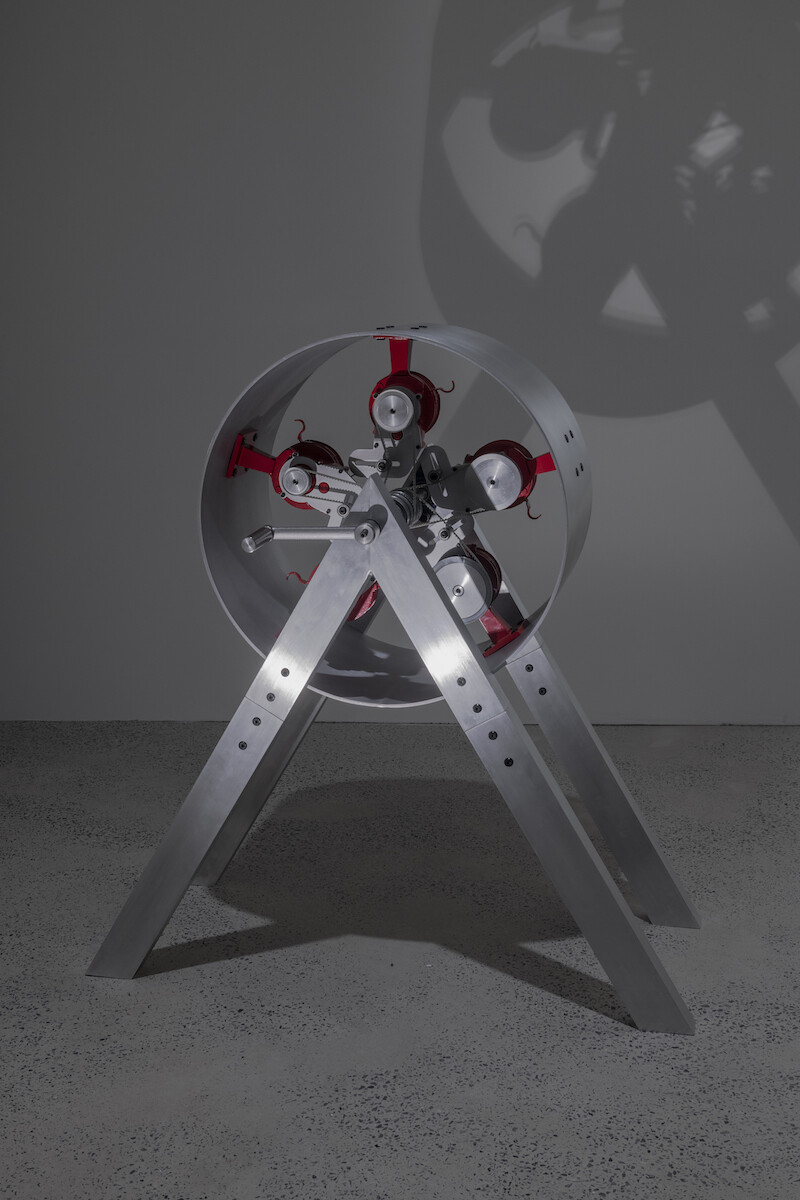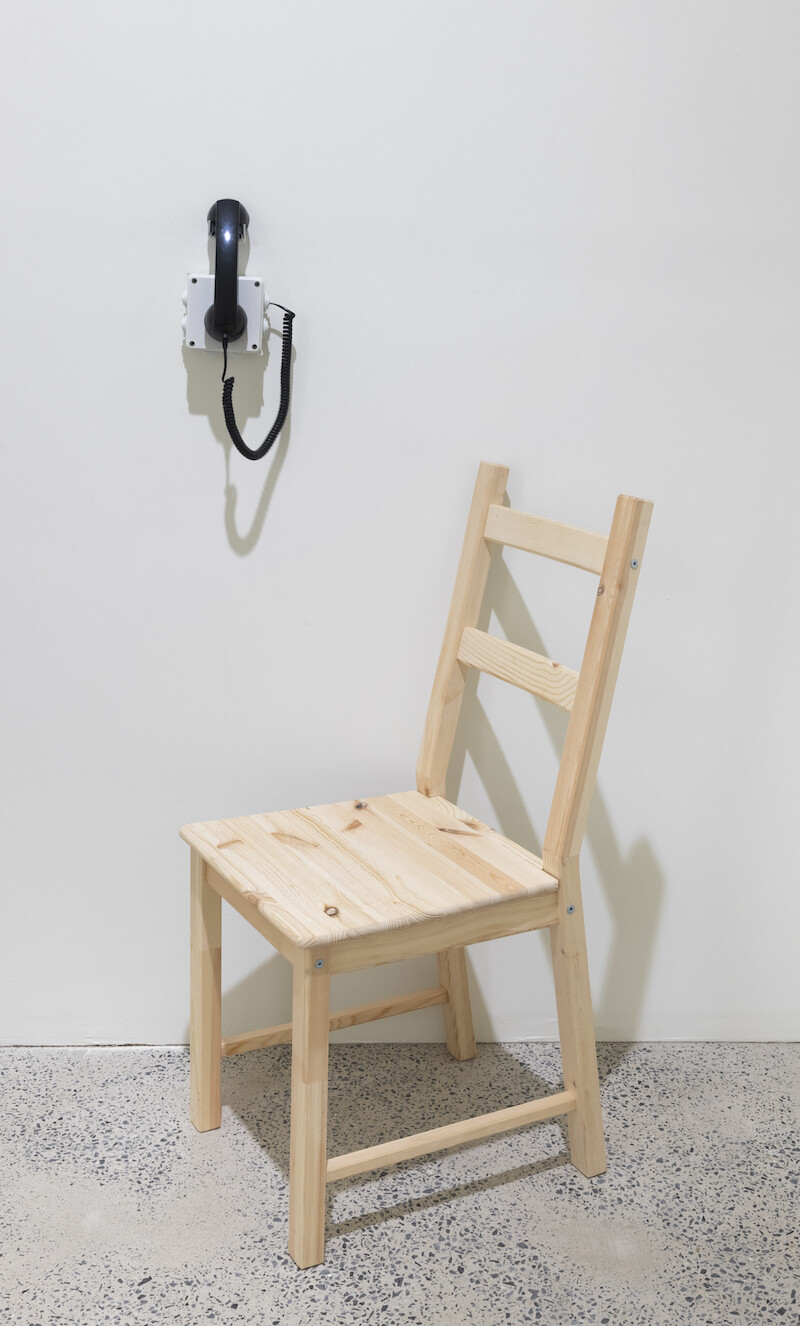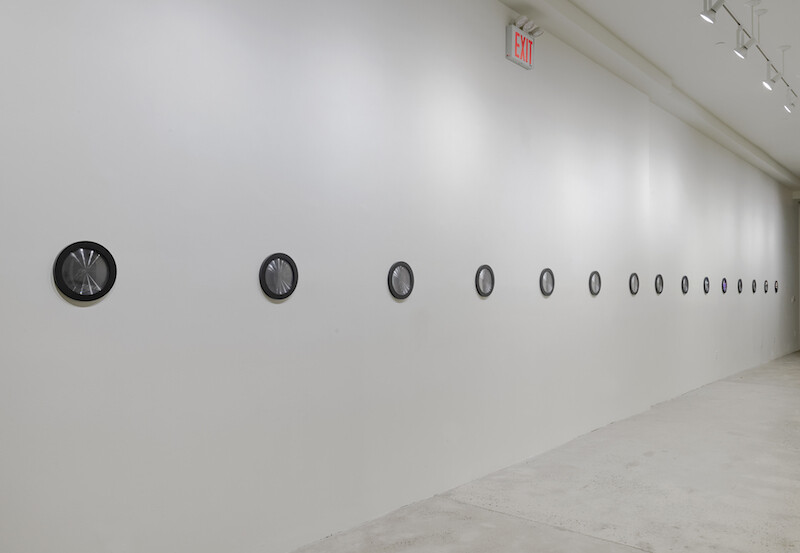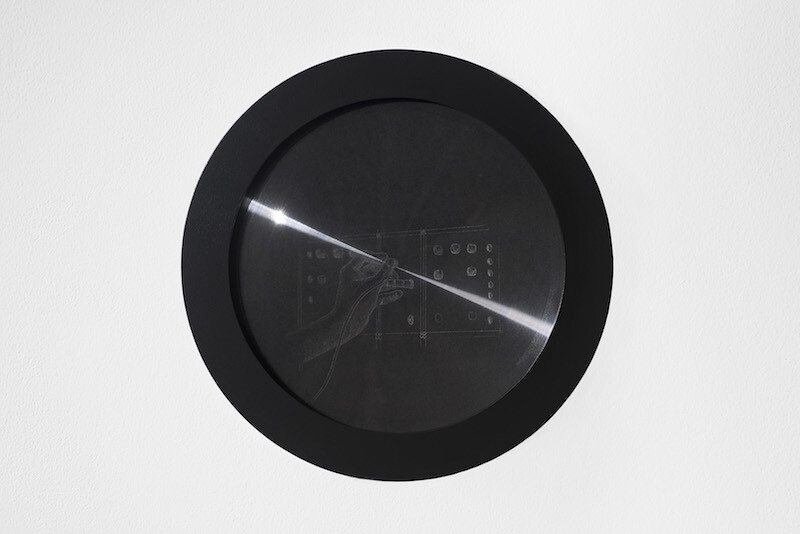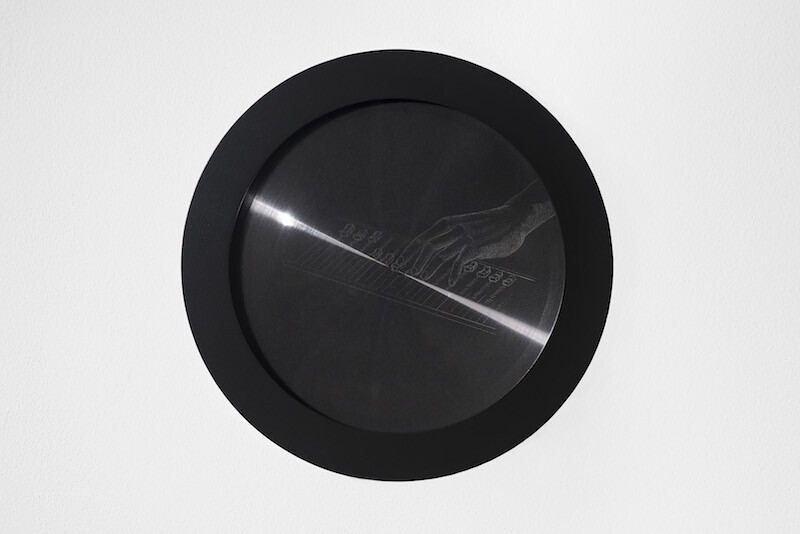On the night of July 16, 2006, Mazen Kerbaj stood on a balcony in Beirut as Israeli Air Force bombs fell in the distance. He picked up his trumpet and played along to the ominous pops, some louder than others. Starry Night (2006), the composition that resulted, asks the unanswerable question: What is the value of an aesthetic response to a political situation? Aura Satz’s film Preemptive Listening (Part 1: The Fork in the Road) (2018) dwells in the same conceptual and acoustic space. This spare work, which beyond a few close-up glimpses of a light bulb depicts only a dark void punctuated by pulses of light, obscures its sources to the point of unrecognizability: actor and activist Khalid Abdalla, whose voice we hear, never identifies the emergency sirens he describes occurring in Egypt during the Arab Spring; an alarm light rotates according to the cadence of his speech; and Kerbaj again plays his trumpet, this time as a low drone imitating the sound of a siren. Satz turns a moment of questioning into reckoning, when one is called to attention by a distant siren, but not yet certain how to act. Played on a loop in the gallery’s back room and heard continuously through Kerbaj’s circular breathing technique, this is the sound of an unending present.
Abstraction often comes with political cost. It runs the risk of absenting real lives and places from their own histories, of letting form take over. This does not happen with Preemptive Listening. The additive quality of sound allows the work to absorb new contexts, including, as the title suggests, those a listener might anticipate. As it layers voice, light, and siren sounds, it also turns the ear in other directions: outward, to the din of Manhattan street noise, and back to a Beirut balcony in 2006, where Kerbaj’s trumpet plays a duet with an unhearing partner.
My viewing of Preemptive Listening came with an additional intrusion, the rising shriek of The Wail That Was Warning (2018), a sculpture composed of five hand-cranked sirens, installed in the gallery’s front room. Another visitor was gleefully turning the crank as fast as possible. Though the two works are separated by a long corridor (the entire show is shaped like a telephone receiver), the noise of the first drowns out Abdalla’s already soft-spoken voice in the second. The siren recedes, then stops, then begins again. There is no escaping its presence. This is ingenious exhibition design: with an alarm that invades all the spaces of the gallery, Satz mobilizes the aspects of sound expressed in Preemptive Listening. We experience the work in every room, even if we are unable to hear it directly.
The sonic interaction of The Wail That Was Warning with Preemptive Listening is only one of the ways sound organizes the exhibition space. Unlike most exhibitions, which are visually oriented, “Listen, Recalibrate” is designed for the ear. It is, in fact, a set of instructions to listen to sounds both near and far, and to adjust ourselves according to what and how we hear. Listening becomes a complex act where words, noises, and drones interact, and where the body, itself an acoustic surface, resonates with and augments the sounds that pass through it. The two other works in the exhibition, Dial Tone Drone (2014) and She Recalibrates (2018), both feature the voice and minimalist compositions of electronic music pioneer Pauline Oliveros. Oliveros is known for her expansive and inclusive approach to music, and in Dial Tone Drone, an edited conversation between Oliveros and Laurie Spiegel that plays on a telephone hooked into the wall, she describes her work Tuning Meditation (1971), in which participants are instructed to alternate between playing notes that match the pitches of their neighbors and notes that no one else is playing. This is “listening out loud,” Oliveros explains, a type of listening that registers hearing in the form of a new or altered sound.
The reciprocity involved in what Oliveros describes is best illustrated in She Recalibrates, a series of small, circular drawings hung along the gallery’s central corridor. These are portraits of a sort, each depicting the hands of female electronic musicians tuning dials, plugging circuits, or adjusting sliders. Satz mounted the drawings under lenticular lenses so that the light of the gallery would move with a passing viewer, radiating outward from the center of each drawing. In this otherwise silent work, it is seeing that changes the image, and, perhaps, what we imagine we hear. She Recalibrates pivots on two points of contact, the viewer’s perspective and the musician’s hand, completing a relay between visual and acoustic media, and the play between different senses.
The delicate, hand-drawn scenes of aural adjustment in She Recalibrates evoke sound on a vastly different scale than the sirens heard in Preemptive Listening and The Wail That Was Warning, yet their placement between these two works is key. In a sense they intercept sounds used most frequently as instruments of police control and military aggression. With this arrangement, Satz imagines that we might turn these sounds to other uses. Since the time of Homer, sirens have had the effect of deranging their listeners. Satz’s feminist reformulation of the Sirens myth proposes the opposite outcome: instead of delirium, a direction. With She Recalibrates and Dial Tone Drone especially, she aligns herself with a history of women who have taken the sounds of industry and authority into their own hands, creating a kind of music that no one had ever heard before. Such is the work of Oliveros and Spiegel. In tuning to their frequency, Satz affirms the possibility that we can orient ourselves in the midst of a tumultuous present, so long as we allow a space for listening.

